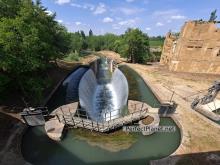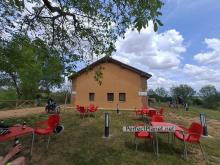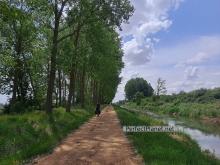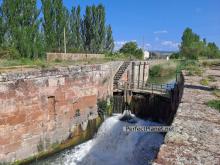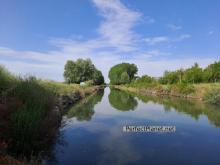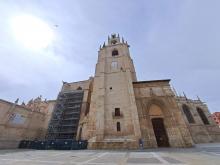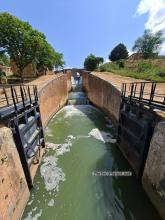The Canal de Castilla is one of the most important hydraulic engineering works carried out in Spain between the mid-18th and early 19th centuries.

Calahorra de Ribas Lock
It runs through the Castilian provinces of Palencia, Burgos and Valladolid.
The purpose of its construction was to serve as a communication and transport route for wool and cereals between the Castilian plateau and Reinosa in Cantabria. With the passing of time, it has become a valuable and isolated ecosystem that serves as a refuge for a notable botanical and ornithological community and an important irrigation channel.
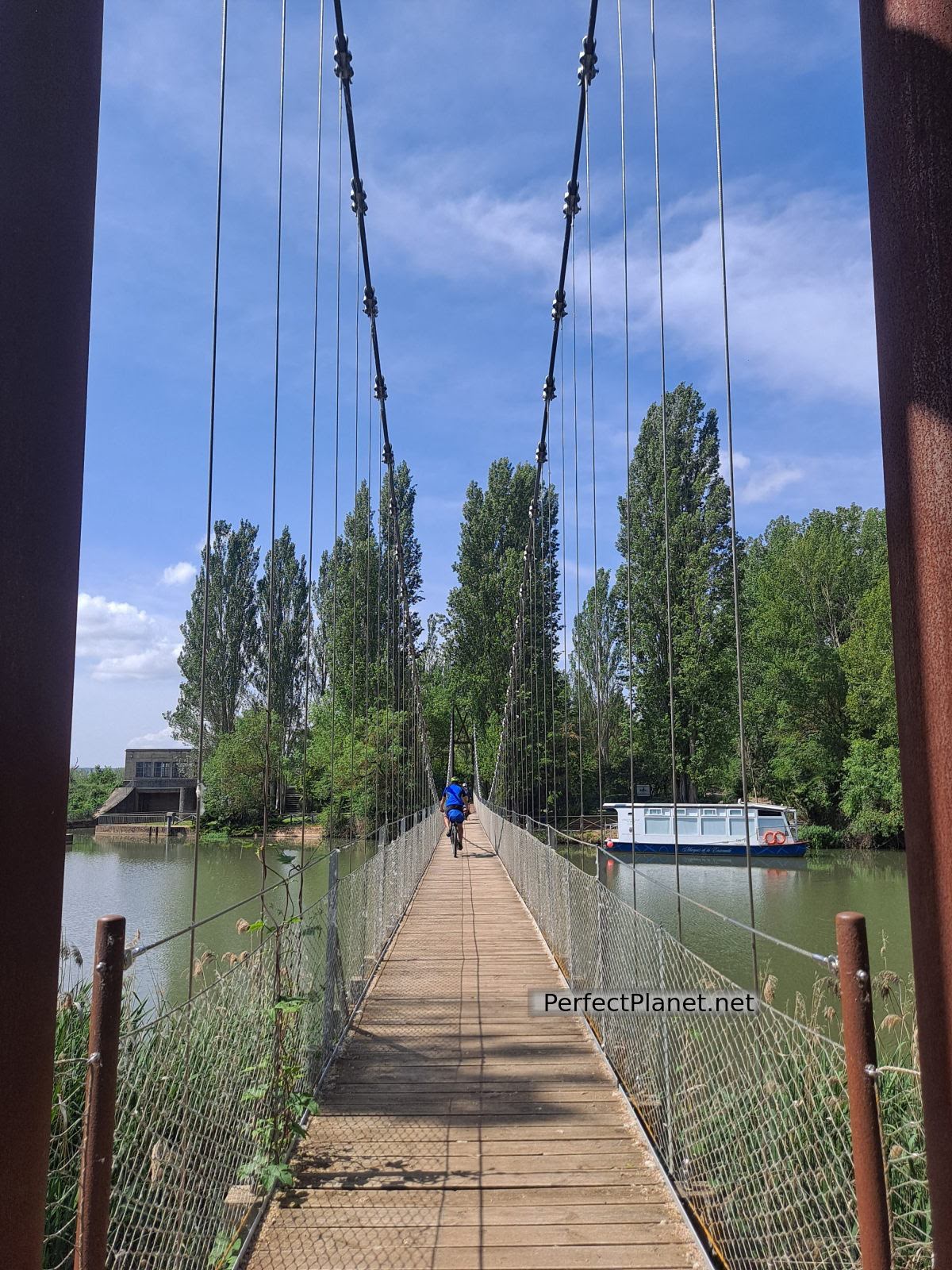
Herrera Suspension Bridge
The Canal de Castilla is divided into three branches:
Northern Branch: distance 75 kilometres and 24 locks. It starts in Alar del Rey, in the province of Palencia, on the waters of the river Pisuerga and reaches Ribas de Campos where the impressive Calahorra de Ribas lock is located, here the waters of the Pisuerga join those of the river Carrión.
Campos branch: distance 78 km and 7 locks. It begins in Calahorra de Ribas and continues through Tierra de Campos to Medina de Rioseco.
Southern Branch: at Serrón near Grijota (Palencia), the Campos Branch forks in two, giving rise to the beginning of the Southern Branch with 54 kilometres and 18 locks that reach Valladolid.
Map
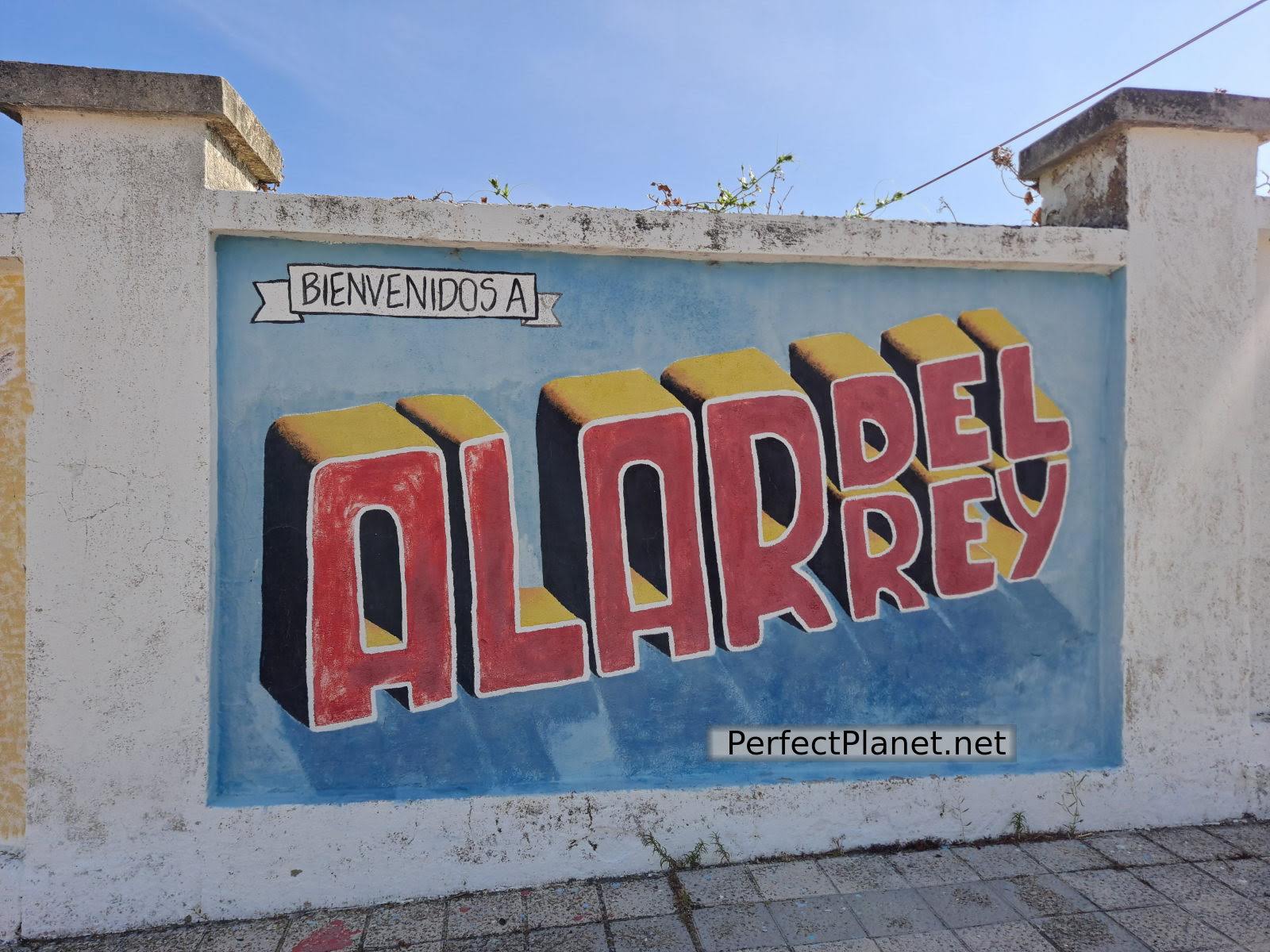
Alar del Rey
You can travel along the Canal de Castilla on foot, by bike or on one of the tourist boats that leave from the towns of Herrera de Pisuerga, Melgar de Fernamental or Frómista, among others.
We recommend you do the route by bike as there is hardly any gradient. The 207 kilometres start in Alar del Rey, in the province of Palencia, where we begin our route.
We will cycle along the northern branch and part of the Campos branch (to Palencia) in two stages, returning by train from Palencia to Alar del Rey.
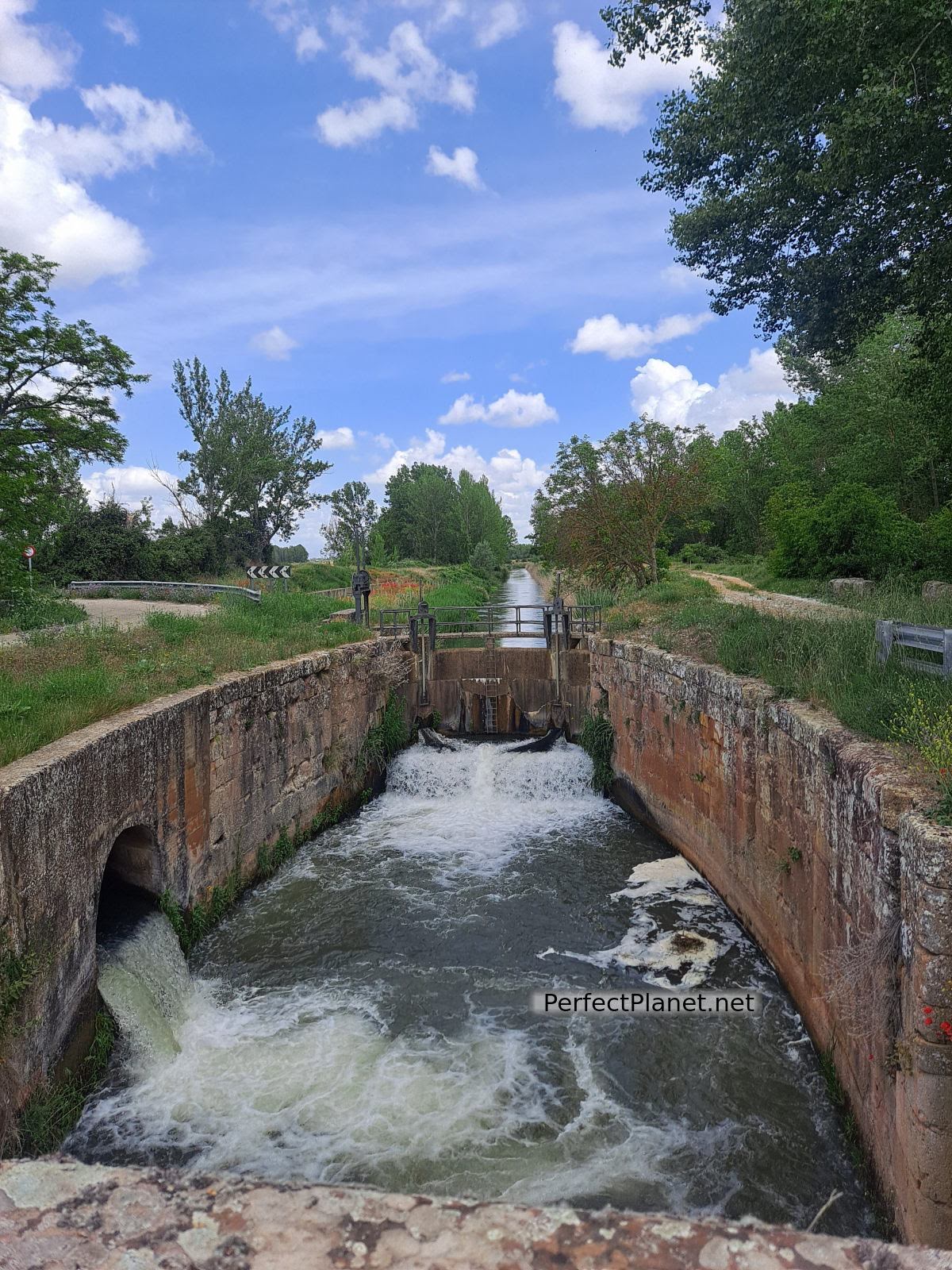
Lock
Day 1. From Alar del Rey to Frómista
Day 2. From Frómista to Palencia
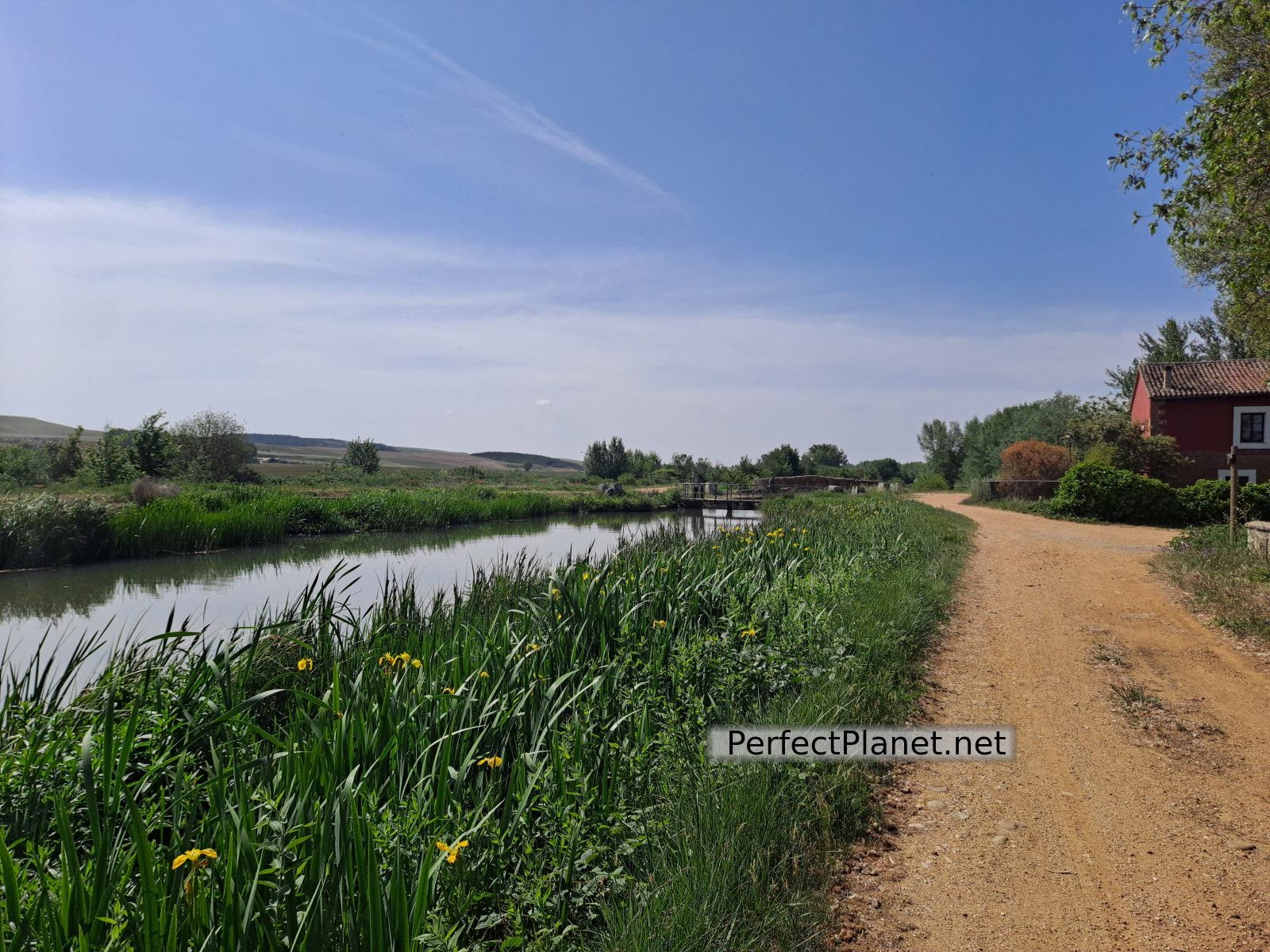
Canal
Day 1. From Alar del Rey to Fromista (60 kms)
How to get to Alar del Rey
Alar del Rey is located in the north of the province of Palencia. From Burgos we took the A231 to Osorno where we took the A67 to Alar del Rey.
We left the car at the train station in Alar and headed with the bikes to the Canal de Castilla Park where the route starts. Here the river Pisuerga and the Canal separate.
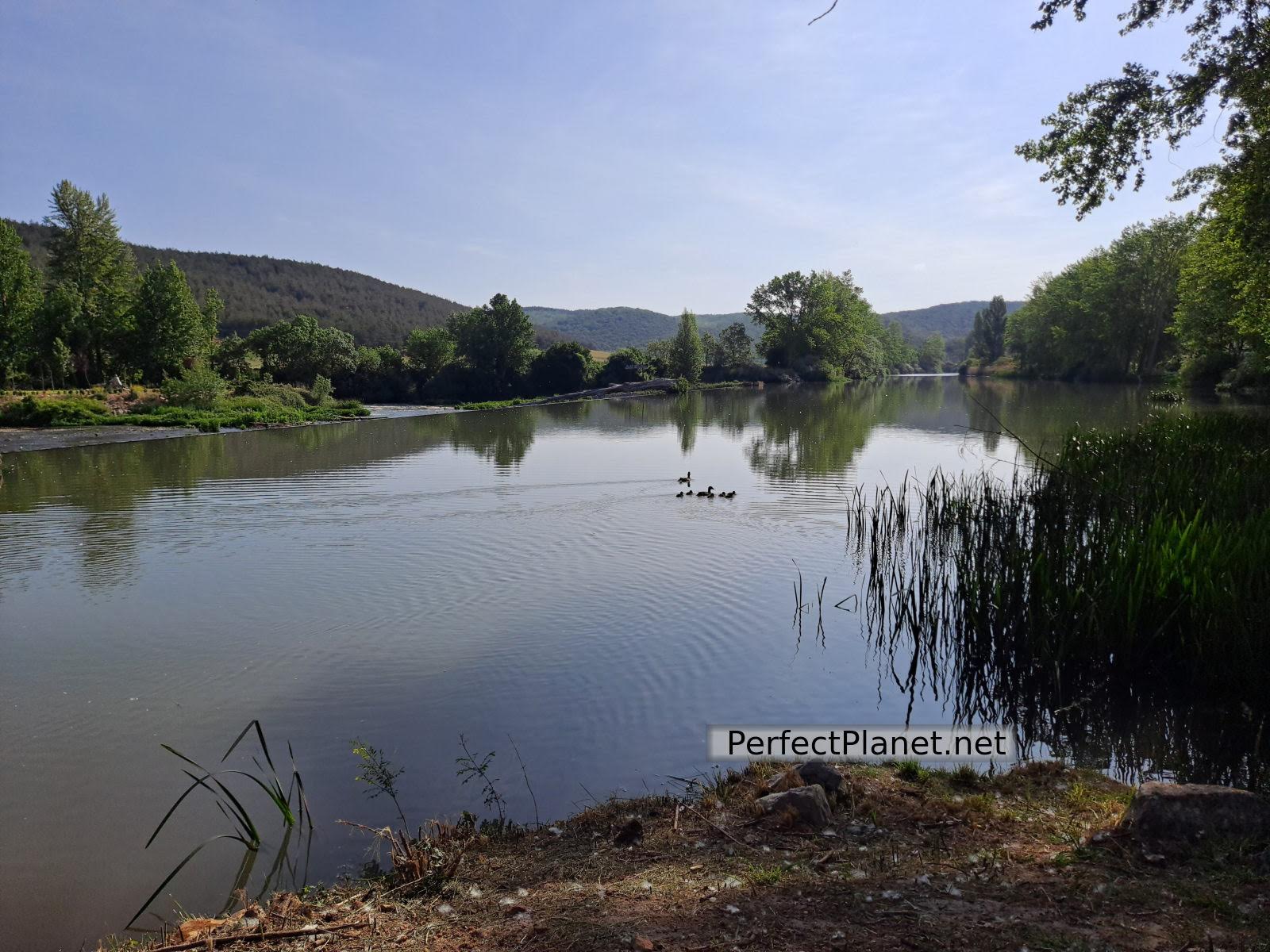
Canal de Castilla park
The path runs parallel to the river and almost all the way you can go along either the right or left bank of the Canal, although we almost always use the left bank.
The Canal in this first stage is marked with the Camino Lebaniego signs. There are no fountains and to reach the nearest villages you have to take a detour. The first stretch is the most striking, there are a lot of locks and bridges. Both banks are full of trees so there is plenty of shade. The path is fairly straight but it is rocky, so it is advisable to be used to cycling.
In Alar the Canal starts, you can visit the old dungeons and next to the dock the old warehouses which have been converted into a cultural centre.
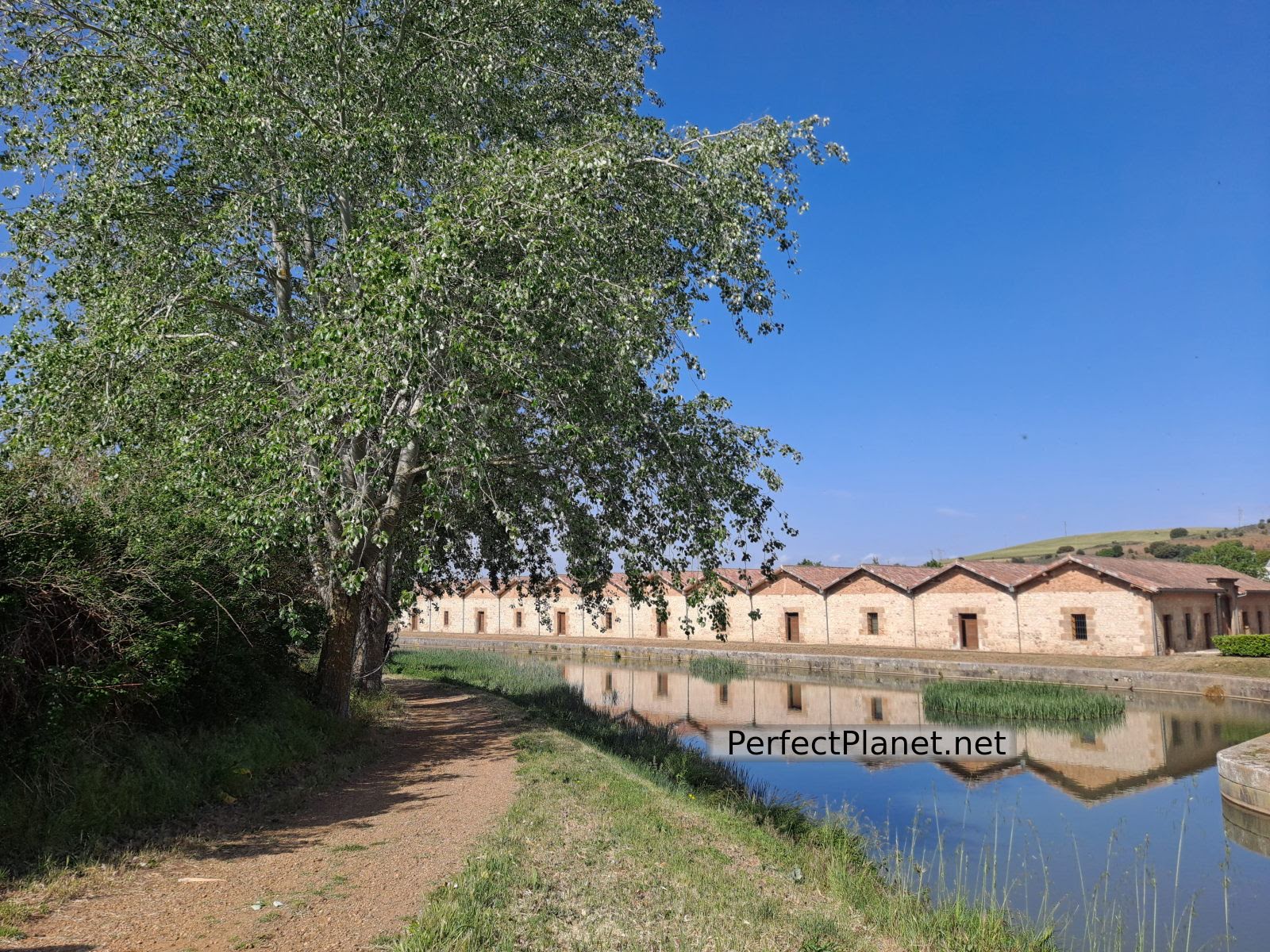
Old warehouses
About two kilometres further on we find the San Vicente district (I think I remember that it has a fountain) where the first lock is located.
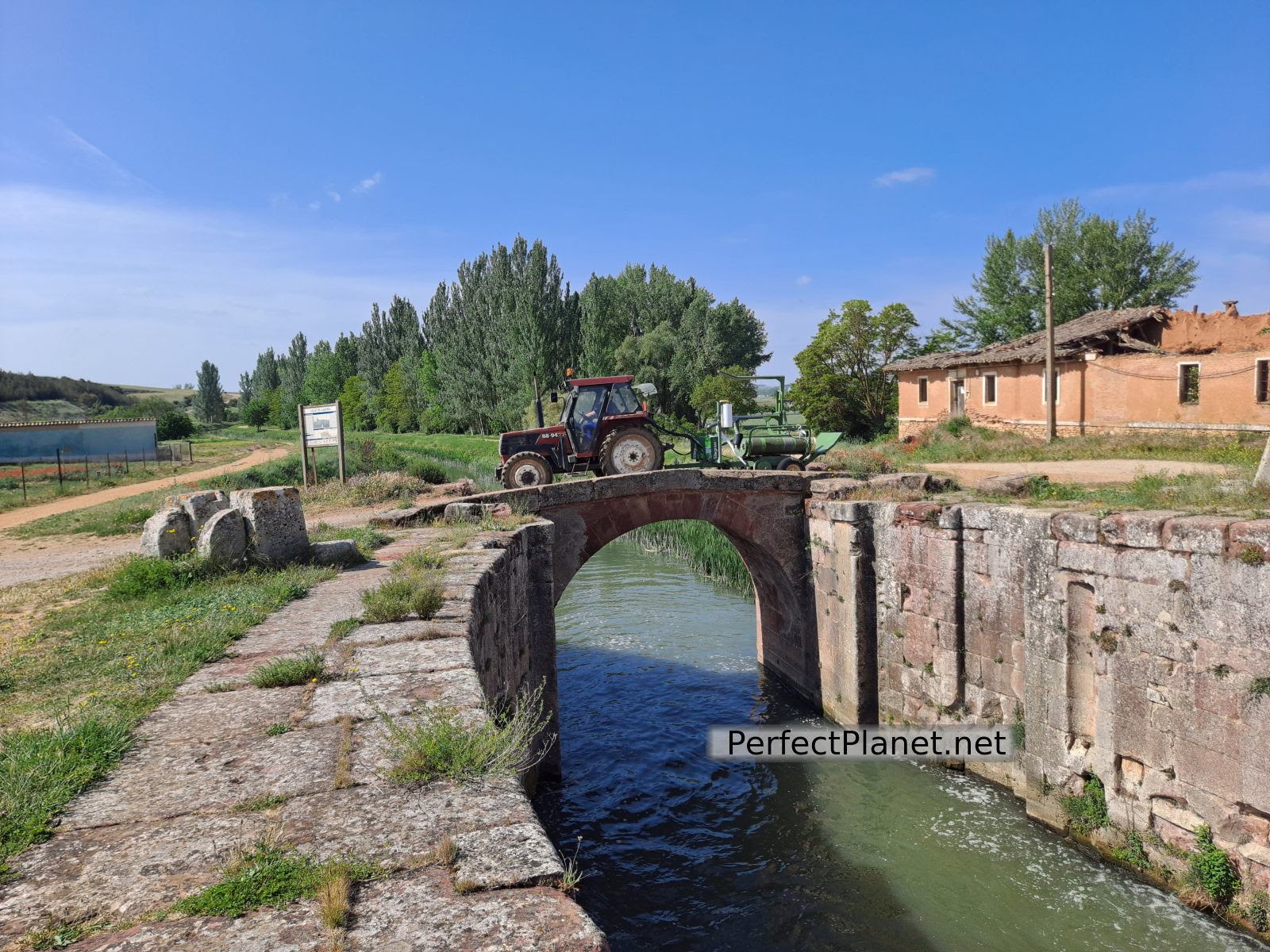
San Vicente district
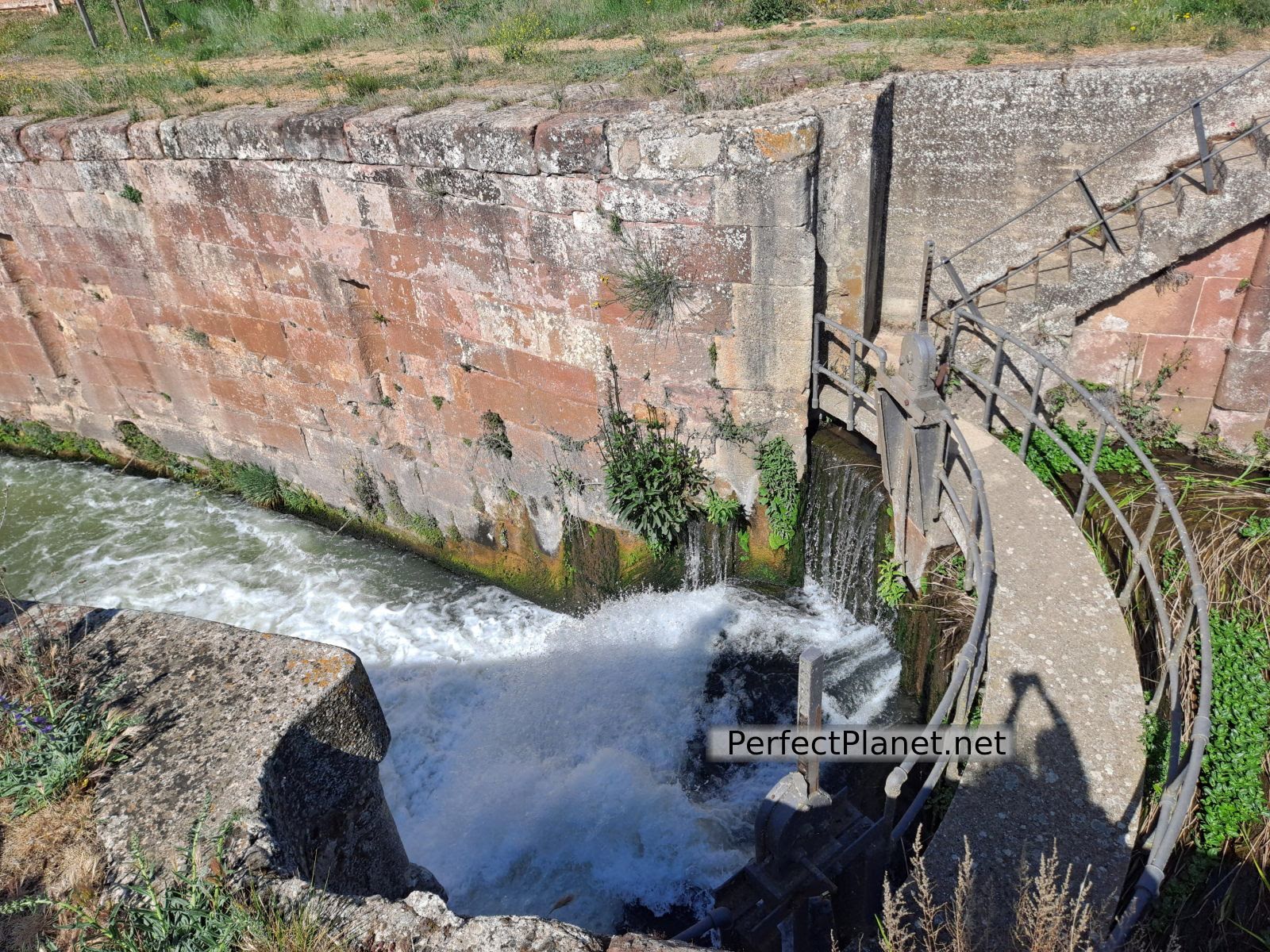
First lock
Passing the sixth lock we come to a suspension bridge over the river Pisuerga. Cross the bridge and you will come to a recreational area where you will find the Canal Interpretation Centre next to the dock from where you can take one of the recreational boats.
You can book the Marqués de la Ensenada tourist boat by calling 664201415. It is named after the 18th century Spanish minister who led the project to improve inland communications following the model of other countries such as France.
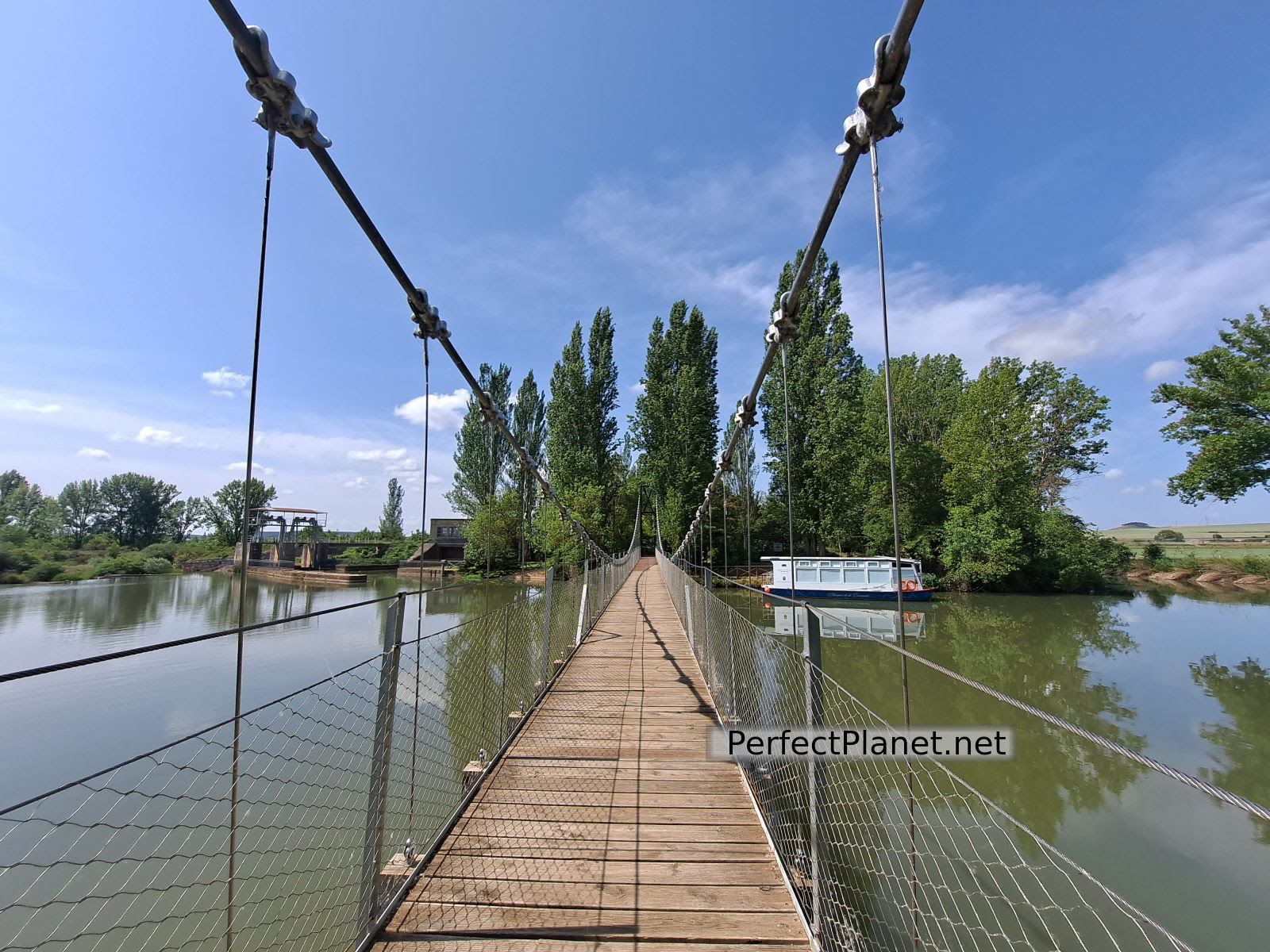
Herrera suspension bridge
We continue our way in a southerly direction passing near Ventosa and Naveros de Pisuerga until we reach the San Llorente lock (number 14) located next to an old mill that was transformed into a hydroelectric power station.
After barely a kilometre we come to the Carrecalzada jetty (where you can catch the San Carlos de Abánades tourist boat, telephone 609 45 04 05) next to the Carrecalzada bar-restaurant located in the old warehouses. An oasis on the way where you can enjoy a good beer or eat if you prefer. Booking is recommended.
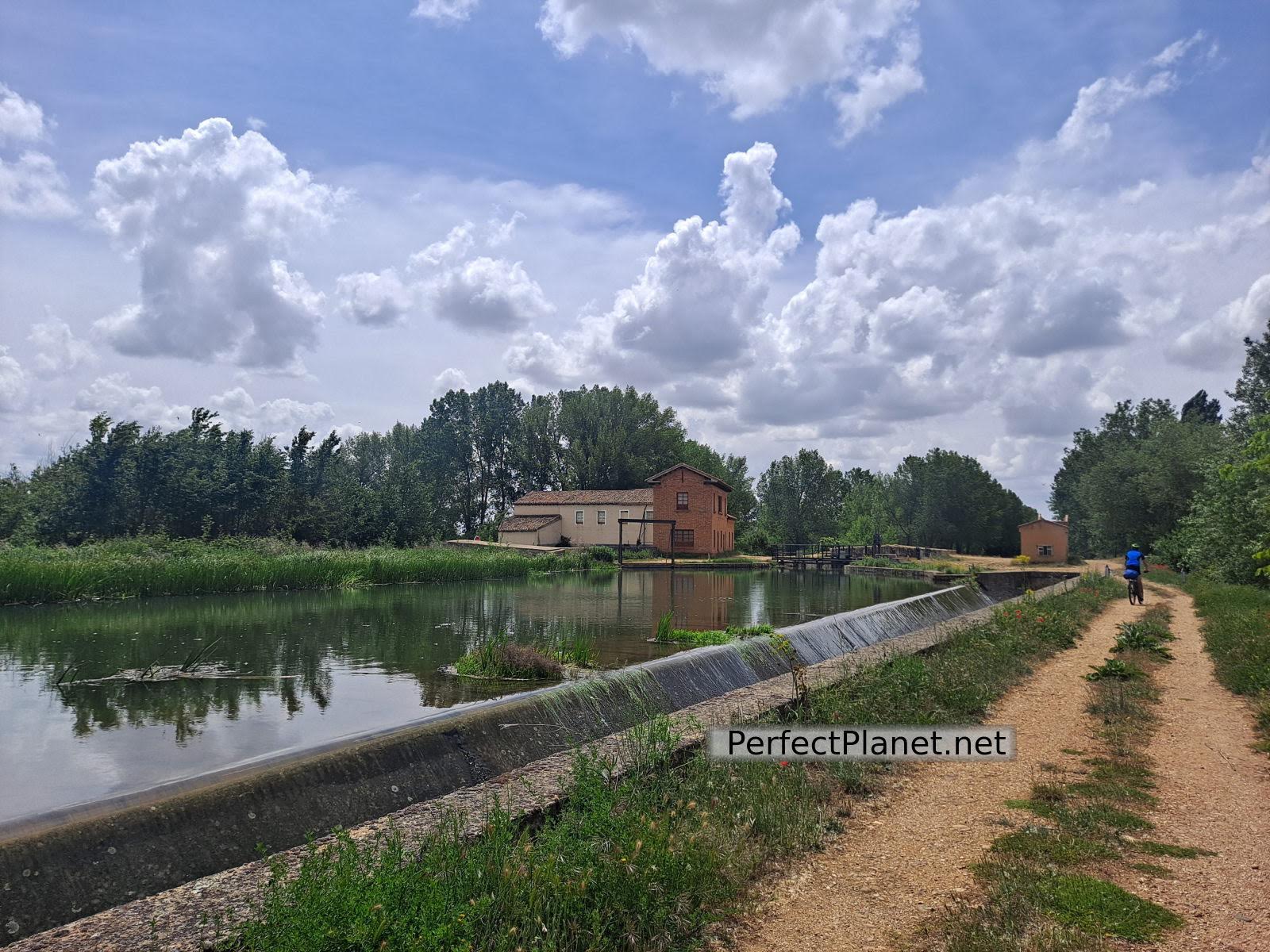
Canal
We continue on our way, and shortly before reaching the Abánades aqueduct (spectacular) we come across a water regulation chamber for irrigation, an emergency spillway to prevent the Canal from overflowing.
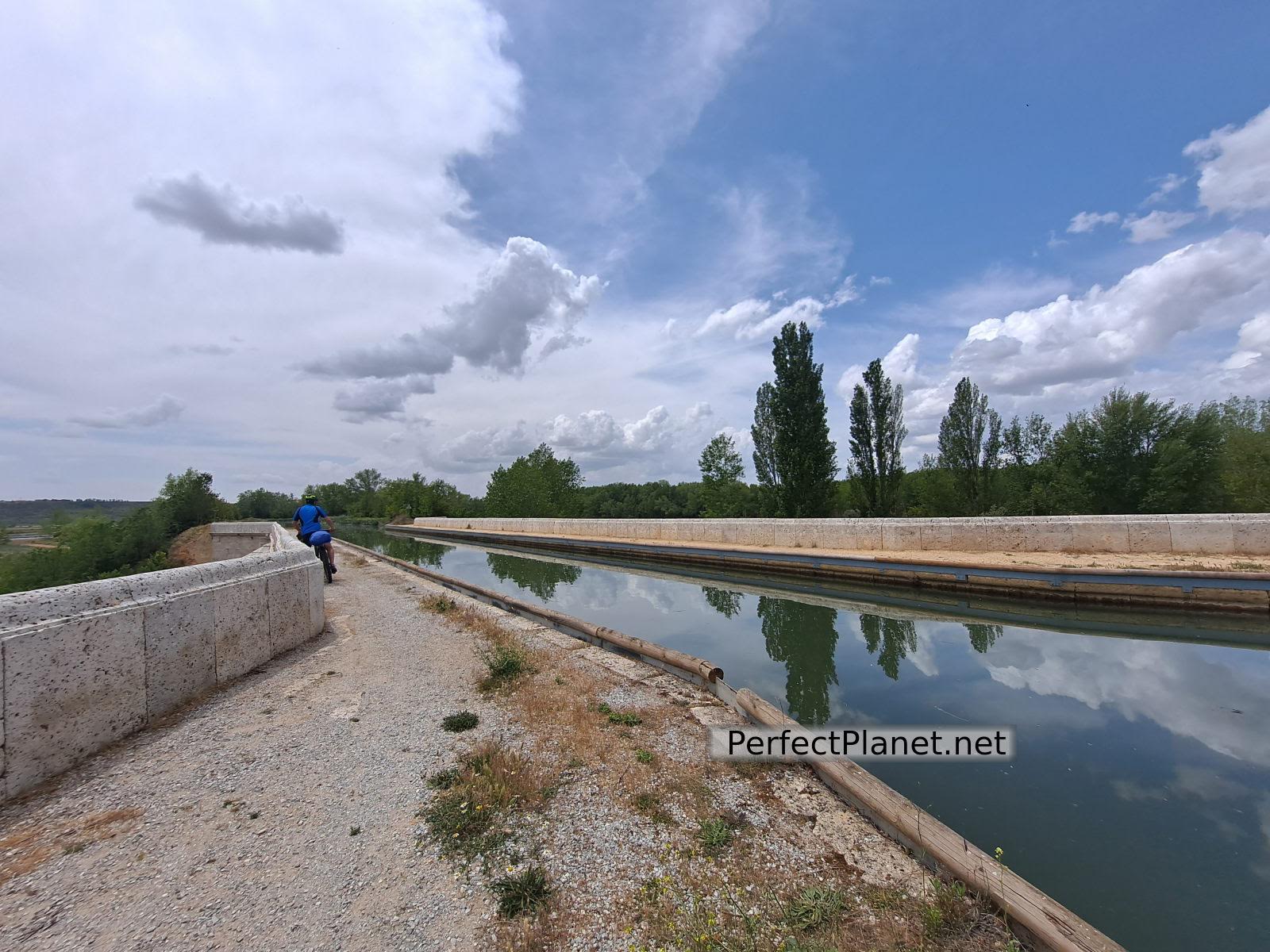
The Abánades aqueduct
From here to the vicinity of Requena de Campos we find the bridge of Las Cabañas, locks and small aqueducts. Passing Requena on the right bank there is a small lagoon with a bird observatory. The truth is that the sound of the birds accompanies us all the way.

Canal
In about ten kilometres we reach the Palencia town of Frómista and its impressive quadruple lock. Here there is also a wharf with a tourist boat, the Juan de Homar.

Quadruple lock
Located in Tierra de Campos, Frómista is an obligatory stop. This is where the Canal de Castilla and the Camino Lebaniego join the French Way of Santiago.
The church of San Martín de Tours, an outstanding example of Romanesque art. You can also visit the church of San Pedro (Gothic with curious extensions) and the church of Santa María del Castillo, located in the upper part.
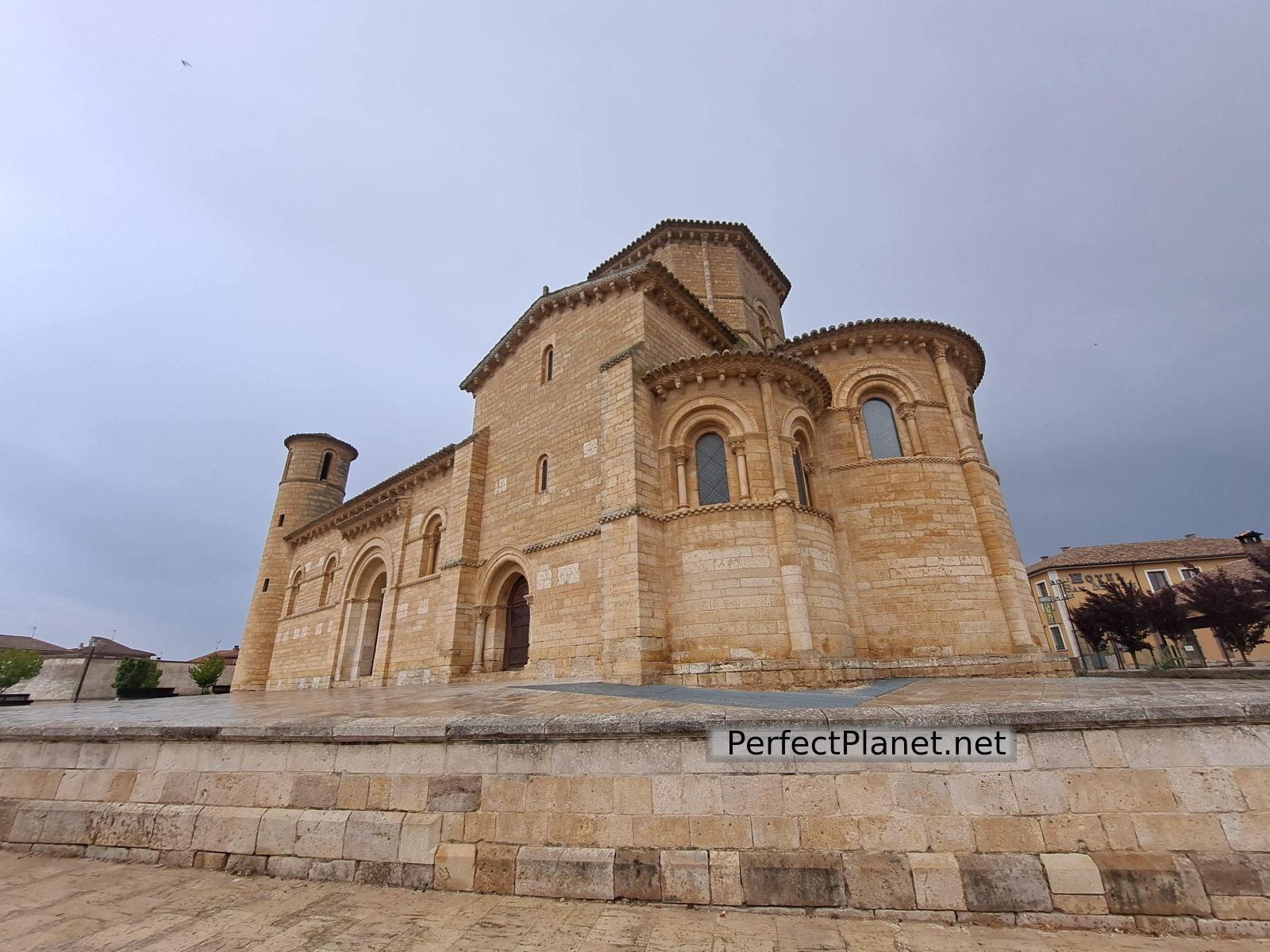
Church of San Martín de Tours
In Frómista there is a wide variety of hotels and restaurants, but the opening hours of the latter are particular. Despite being in Spain, the main tourists are foreigners, so at 9 p.m. you can find all the kitchens closed even on weekends. If this happens to you (as it did to us) we recommend the Garigolo bar, which serves great pizzas and Ribera wine.
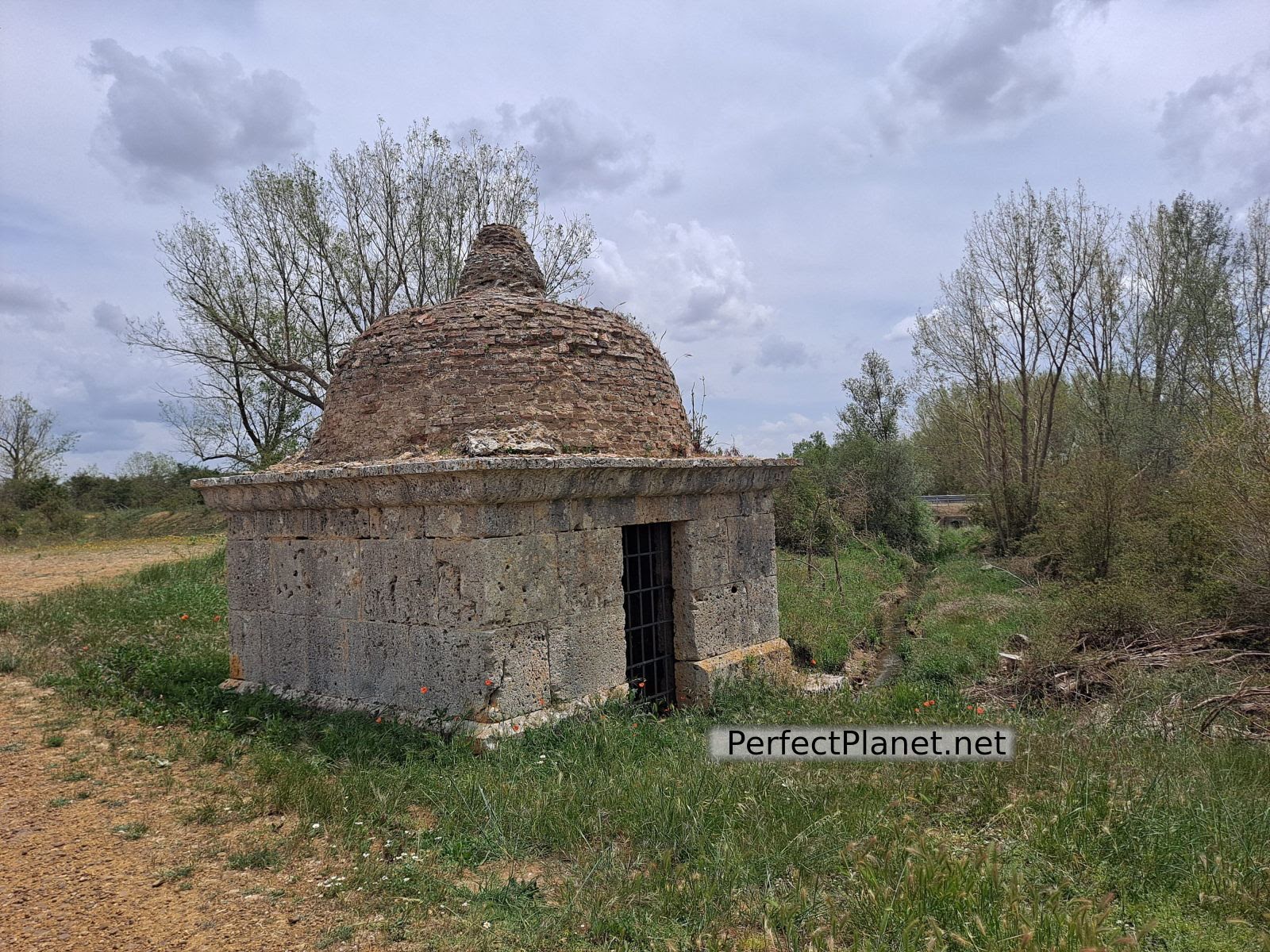
Chamber
For breakfast we recommend and insist that you visit the Salazar bakery where you can have excellent sweets, toast, sausages, coffee.... Delicious, good price and they are also charming. There are also specific opening hours for breakfast, some establishments either don't open or close before 9 am.
To sleep we recommend the Albergue Vicus. It has 6 beds in two rooms, small but cosy and well located (13 €/pax/night), he let us put the bikes inside the hostel. Angel is a sweetheart.

Breakfast
Day 2. From Frómista to Palencia (53 kms)
Today's stage will take us from Frómista to Palencia, 53 kilometres with hardly any gradient.
We had breakfast at the Salazar bakery, toast with oil, tomato, coffee and sweets, bread and a packet of cold meats for 22 € for 4 people. Everything is spectacular, you have to try it.
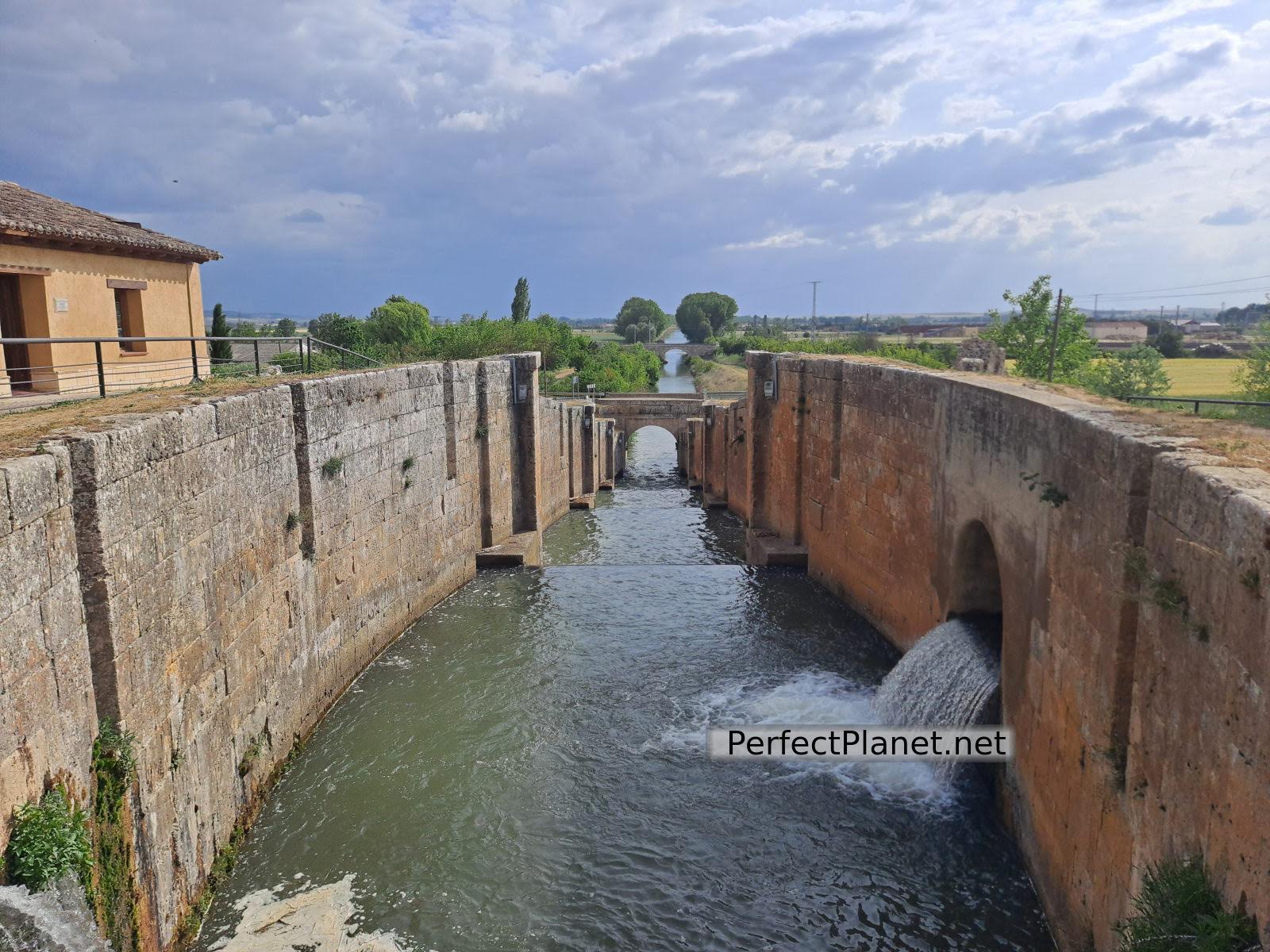
Frómista
We start the route from the quadruple lock at Frómista where we finished yesterday. Both banks are wooded and early in the morning it is easy to see birds such as cuckoos and goldfinches crossing the path.
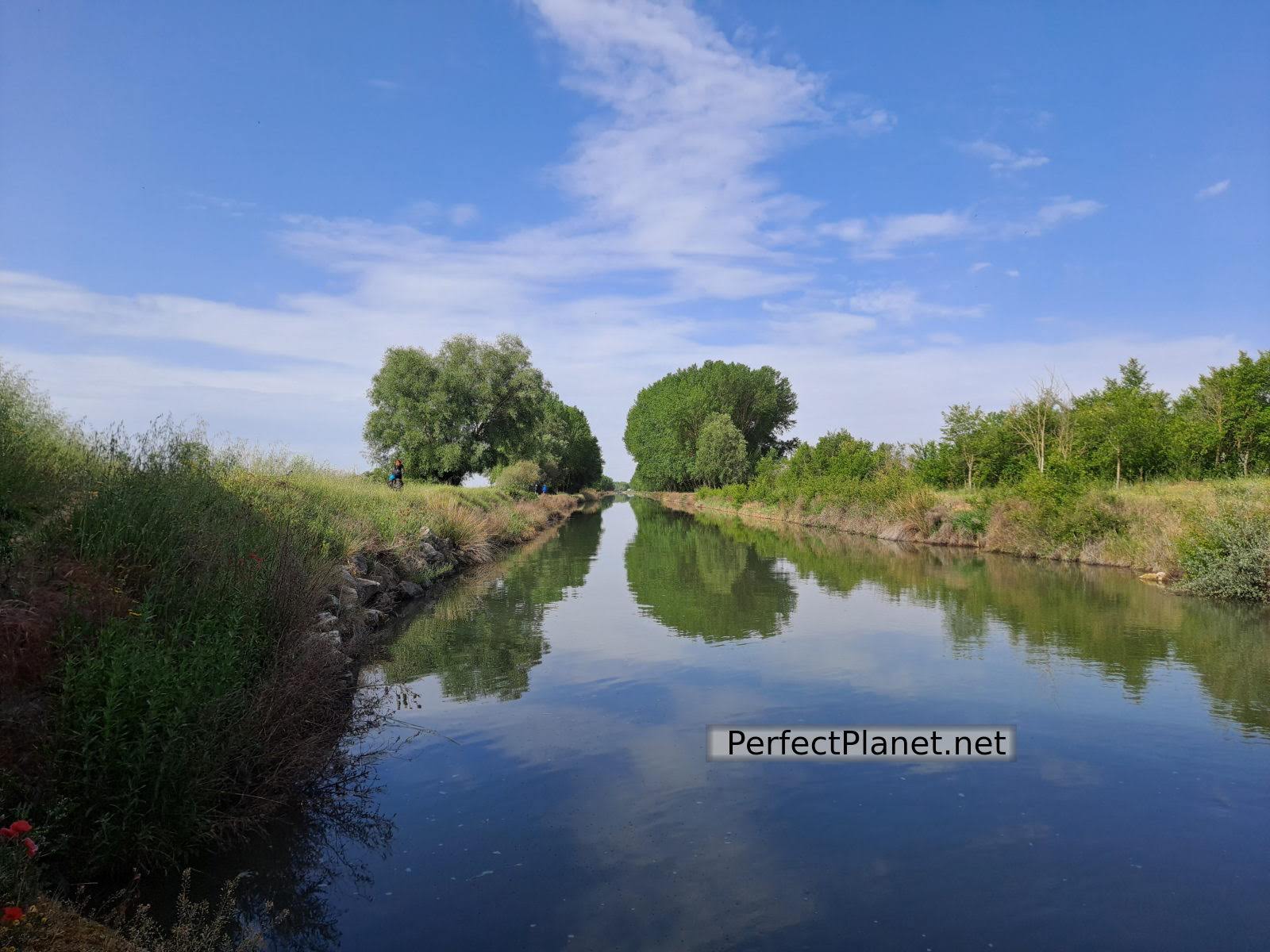
Canal
On both sides of the Canal you can enjoy several lagoons in the kilometres that separate us to the Calahorra de Ribas lock, of which we highlight the Laguna de la Toja. This part of the route has fewer locks than yesterday.
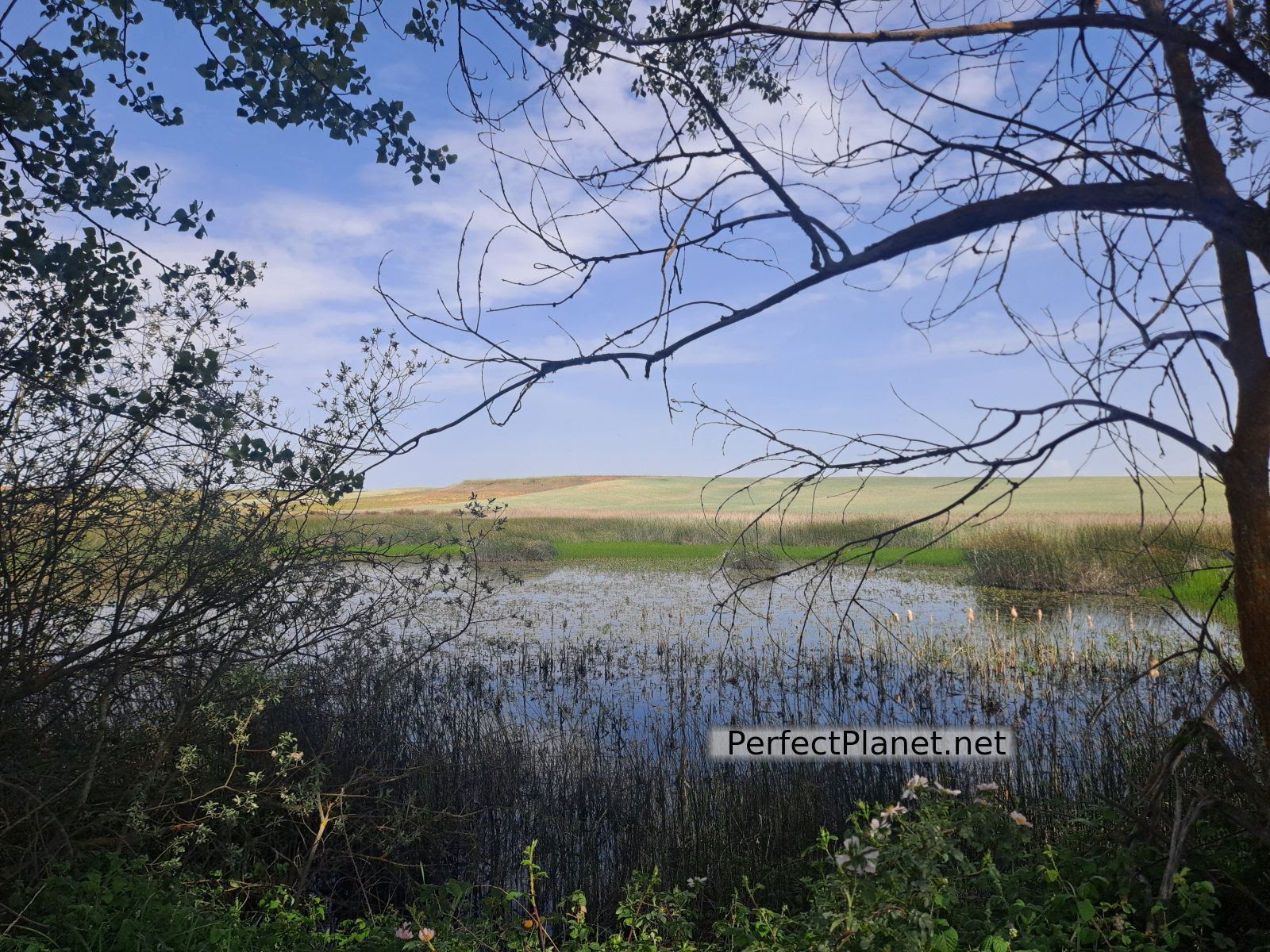
Lagoon
We arrive at the Calahorra de Ribas lock. One of the most emblematic and impressive places on the Canal, and no wonder. It is a triple lock that still preserves the sluice gates. The construction of the Canal began at this point in 1753.
The sound of the water and the force with which it descends, the height and dimensions of the lock make this place one of the main landmarks of the Canal. Next to it, there are several buildings in ruins, one of which is being restored as a power station.
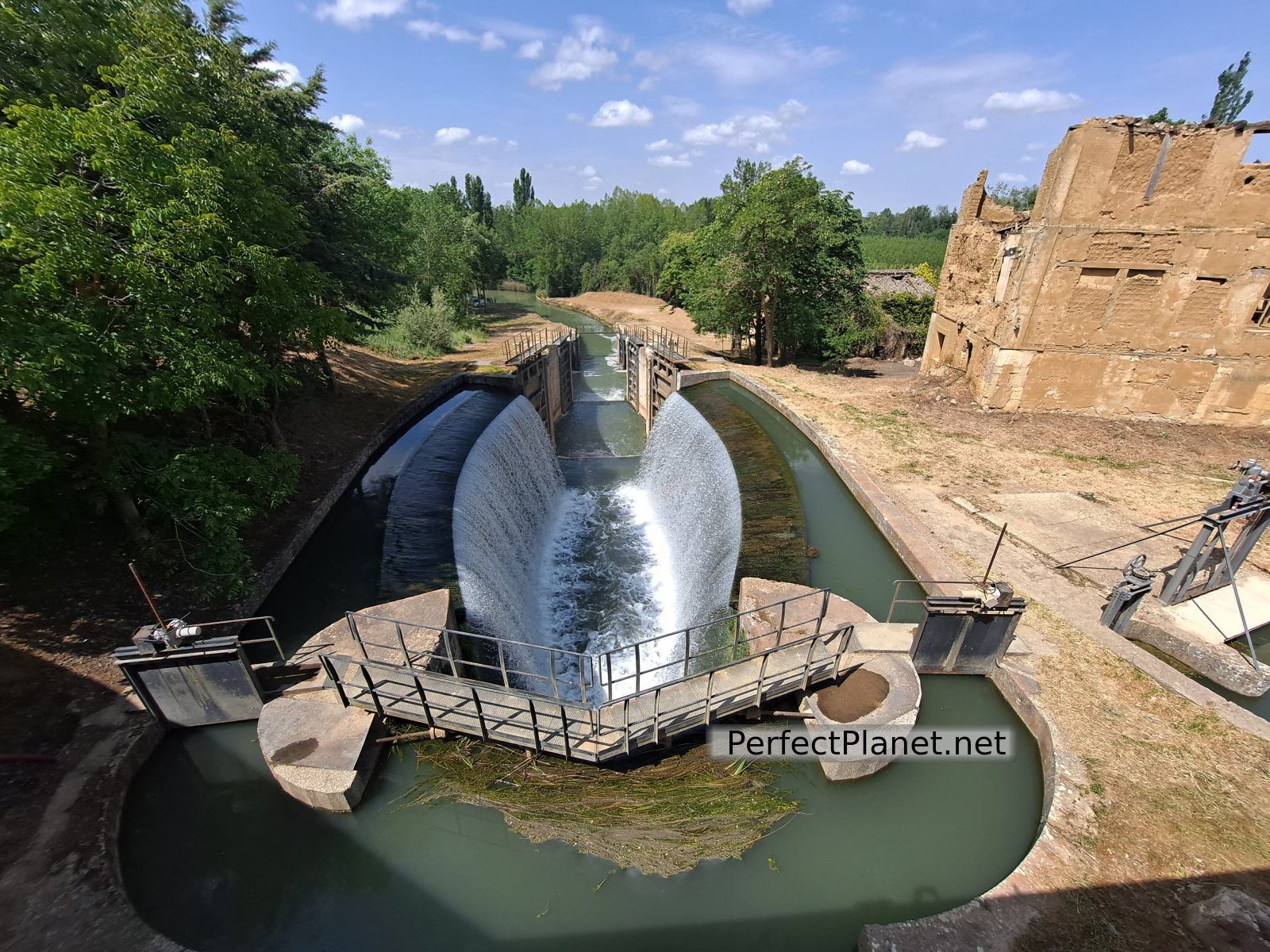
Calhorra de Ribas lock
A few metres from the lock, the river Carrión mixes with the waters of the Canal, giving rise to the Palencia Canal and a little further down the Campos Branch, along which we continue our journey.

Calahorra de Ribas
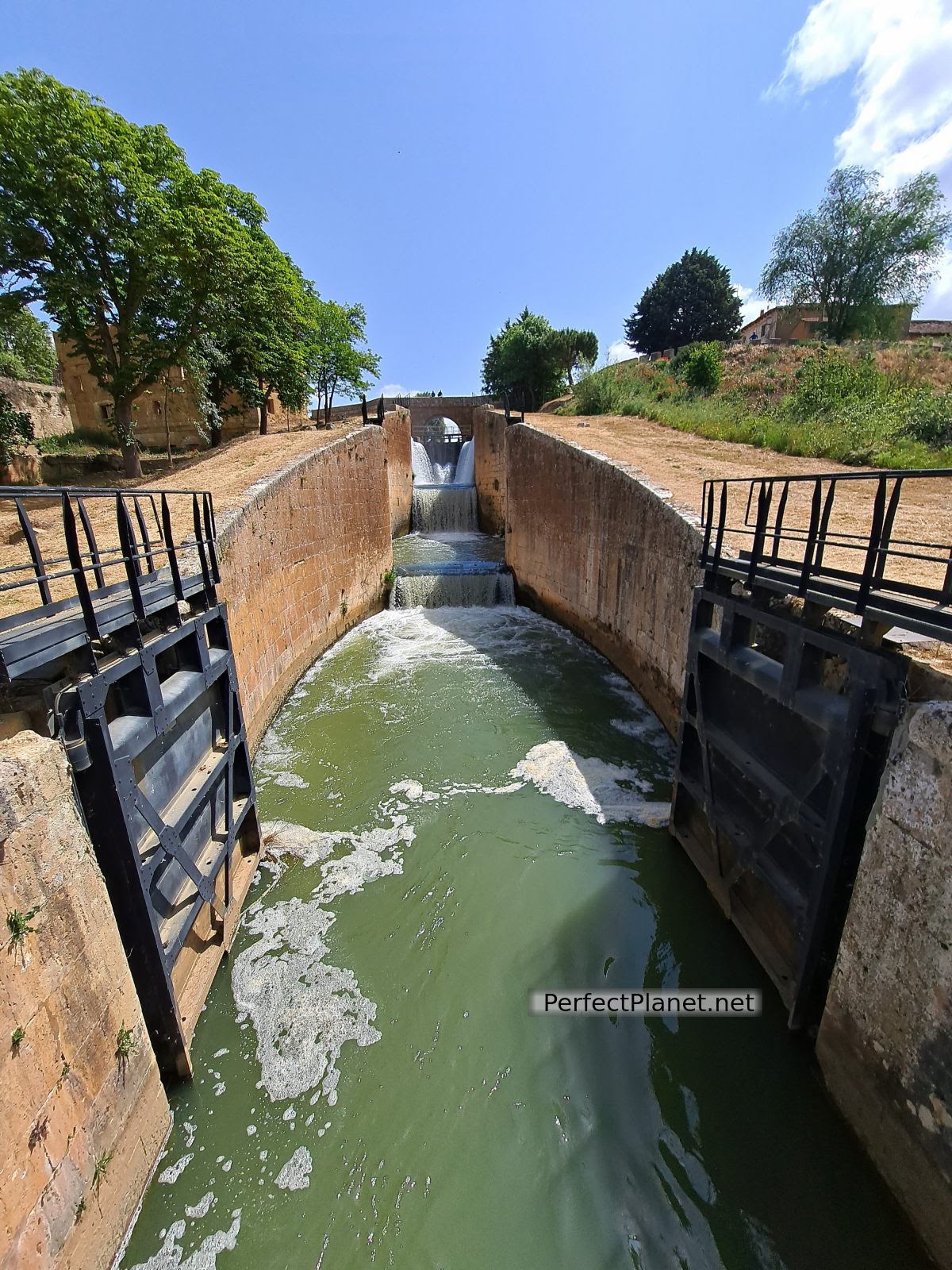
Calahorra de Ribas
A pretty path accompanies us for the ten kilometres that separate us until we reach Grijota. Three kilometres from this town we find another triple lock and an old flour factory. This area, known as El Serrón, was one of the most important industrial enclaves in Castile at that time, when there were four flour mills and three locks, together with houses and warehouses. Here the Canal is divided between the South Branch and the Campos Branch.
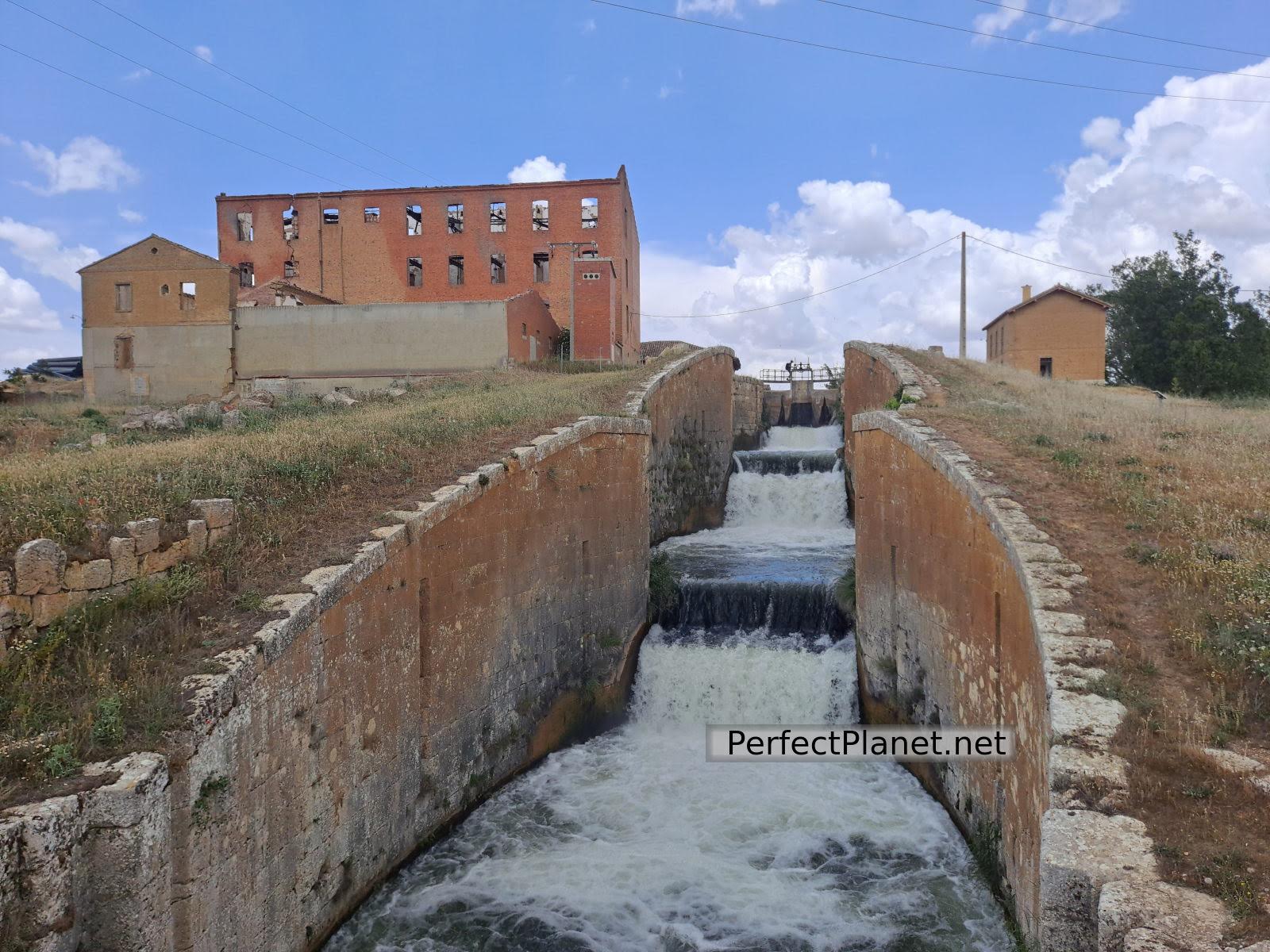
Lock and old flour factory
In Grijota we make a technical stop for a beer, with great success, there is an impressive downpour of water. Grijota has all the services as it is very close to the city of Palencia.
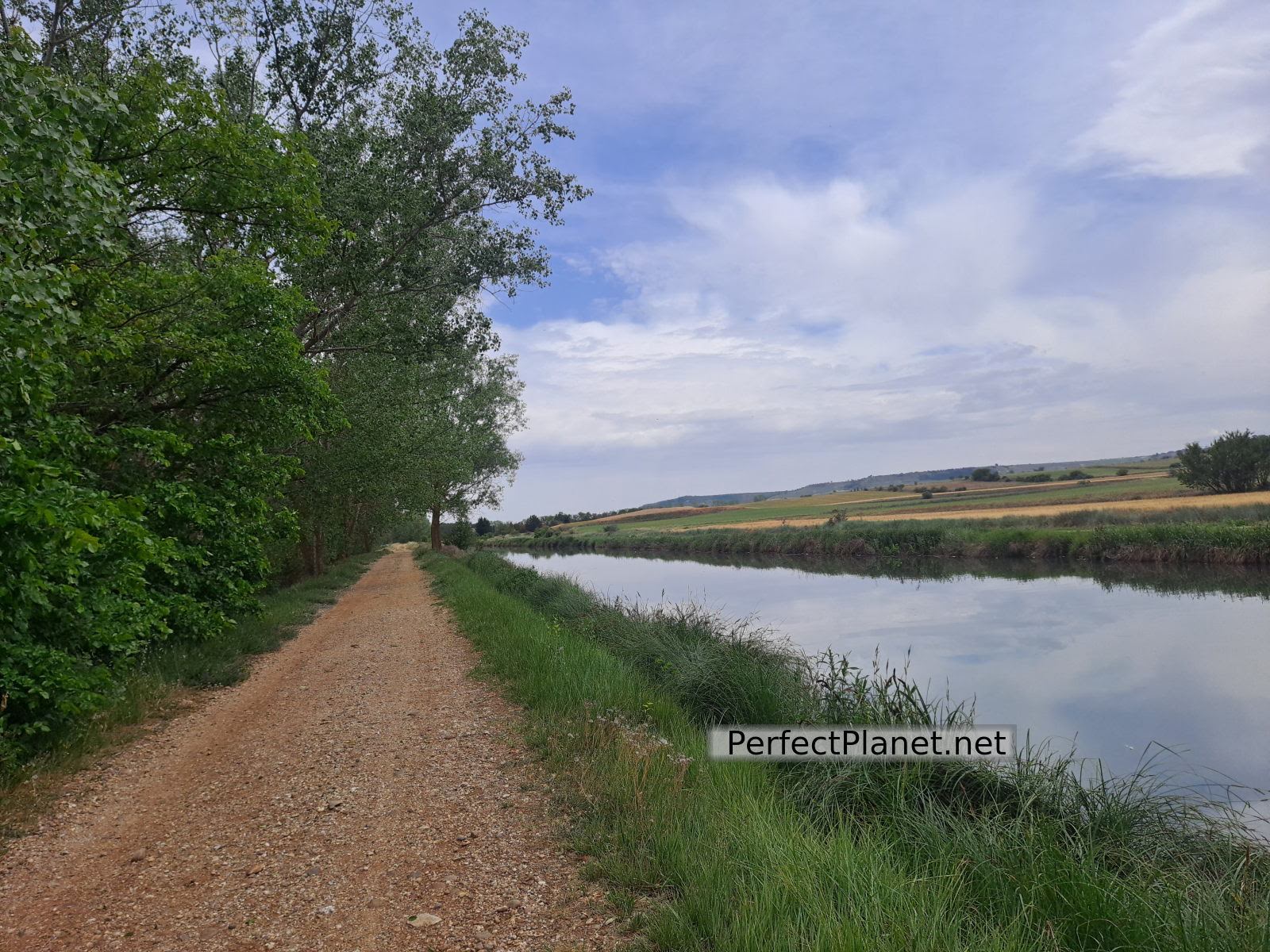
Canal
We continue our journey along the southern branch towards the city of Palencia, where we take the train to return to Alar del Rey.
At locks 31 and 32 in Viñalta, always on the left bank, we take the path that will take us to the Palencia dock where we will find the Canal de Castilla Museum, known as La Casa del Rey, which preserves the remains of the shipyards that allowed the construction and repair of the 400 boats that sailed the Canal at the end of the 19th century.

Palencia dock
Tips. There are no fountains along the route so carry enough water except in Alar and if you detour to Herrera de Pisuerga, Ventosa de Pisuerga, Carrecalzada restaurant, Requena de Campos, Frómista, Grijota and Palencia city.
Don't forget your lunch, sun cream and mosquito protection.
If you prefer to travel the Canal in one direction only, some towns are connected by train. We took the train from Palencia back to Alar del Rey. Officially there is only room for 3 bikes per train but if you contact them in advance they can authorise you to take more bikes. We were helped a lot by Fernando frequena@renfe.es. There are two trains a day covering the Palencia-Alar del Rey route, one at 10am and the other at around 7pm, it takes about an hour to get to Alar.

Lock
- Log in to post comments

